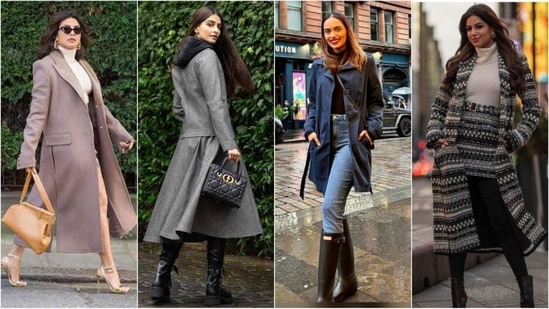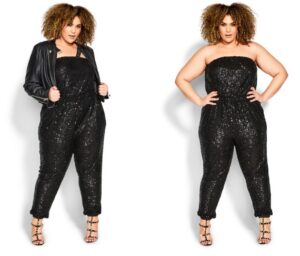To stay warm in the snow, wear layers and waterproof clothing. When venturing out into snowy weather, it’s crucial to be dressed appropriately to avoid frostbite and hypothermia.
Generally, dressing in layers is the most effective way to retain heat, as each layer creates a barrier between you and the cold. Base layers should be moisture-wicking to keep you dry, followed by a warmth layer like fleece or wool, and finally a waterproof outer layer to protect against the snow and wind.
On your extremities, wear warm hats, gloves, and waterproof boots with good traction to prevent slipping. Additionally, protect your eyes from the glare of the snow with sunglasses or goggles. With the right clothing, you can enjoy your snowy adventure while staying warm and comfortable.

Credit: www.hindustantimes.com
The Basics: Layering Is Key
When it comes to dressing for the snow, layering is key. Layering your clothing helps you to stay warm and dry, while also allowing you to remove layers as needed when you start to heat up. Here are the three basic layers you will need:
Base Layer: This Layer Should Be Made Of Moisture-Wicking Material That Will Keep Sweat Away From Your Body.
Your base layer is the layer closest to your skin. This layer should be made of moisture-wicking material that will keep sweat away from your body, helping you to stay dry and warm. Consider the following when choosing your base layer clothing:
- Look for materials like synthetic blends, wool, or silk that will wick moisture away from your skin.
- Stay away from cotton as it absorbs moisture and will leave you feeling damp and cold.
Mid Layer: This Layer Should Provide Insulation To Keep You Warm.
Your middle layer provides insulation to keep you warm. It is essential to choose a mid-layer that is breathable and moisture-wicking to ensure that your base layer stays dry. Consider the following when deciding on your middle layer clothing:
- Look for materials like fleece, wool, or down that will trap your body heat and keep you warm in colder climates.
- Consider your activity level and temperature when deciding on the thickness of your mid layer.
Outer Layer: This Layer Should Be Waterproof And Breathable To Protect You From The Snow, Wind, And Rain.
Your outer layer is your final layer, and it’s essential to keep you dry in wet or snowy conditions. Consider the following when choosing your outer layer clothing:
- Look for materials like gore-tex or other waterproof and breathable fabrics for your outer layer.
- Consider the conditions you will face, such as wind, snow, or rain, when choosing your outer layer clothing.
- Choose clothing that fits snugly to your body while still allowing for movement.
By paying attention to the type of fabrics, layering, and conditions that you will face, you can ensure that you stay warm, comfortable, and dry while enjoying the snowy outdoors.
Choosing The Right Fabrics
Winter is rapidly approaching, and the excitement of outdoor activities in the snow is growing. Whether you are planning a ski trip or a simple walk in the park, wearing the right fabric is essential to stay warm, comfortable and safe.
Here is a breakdown of some of the key fabrics to consider for your winter wardrobe:
Merino Wool:
Merino wool is a top choice in winter fashion due to its softness, moisture-wicking, and breathability properties. Here are some of the crucial points to keep in mind when considering merino wool:
- Merino wool is ultra-soft and comfortable, making it a great choice for sweaty outdoor activities.
- This fabric naturally wicks sweat and moisture away, keeping you dry and warm.
- Additionally, merino wool is breathable, meaning it traps warm air close to the body while allowing cold air out.
Fleece:
Fleece is a highly versatile and popular material for winter wear since it provides excellent insulation and durability. Here are some key benefits to consider:
- Fleece is lightweight and traps heat effectively, keeping you warm and cozy.
- It’s both durable and easy to care for.
- This fabric is moisture-wicking and helps to transport sweat and moisture away from the body, keeping you dry and comfortable during outdoor activities.
Gore-Tex:
If waterproof and breathability are your top priority, gore-tex is the perfect fabric for the ultimate protection against the winter elements. Here are a few essential points to keep in mind:
- Gore-tex has a waterproof and breathable membrane that stops rainwater and snow from getting in while still allowing sweat out.
- The material is heavyweight and provides excellent insulation.
- Gore-tex is the perfect outerwear fabric since it’s perfect for keeping water and snow out. Stay dry and comfortable during harsh winter weather.
When picking what to wear for snowy weather conditions, it’s essential to remain mindful of the best fabrics to keep you warm, dry and safe. Opt for merino wool for softness and moisture-wicking, fleece for insulation and durability, and gore-tex for waterproof and breathability qualities.
Winter Accessories That Are Both Practical And Stylish
Winter is one of the most beautiful seasons of the year, but it can also be one of the most challenging. With temperatures below freezing and snow everywhere, it can be tough to figure out what to wear. While it’s important to stay warm, it’s also crucial to look stylish.
Luckily, there are plenty of winter accessories that are both practical and stylish. Below are some of the must-have winter accessories that will keep you warm while looking your best.
Scarf
A scarf is a great way to add some color and texture to your outfit while also keeping your neck warm. Here are some key points to consider when choosing a scarf:
- Look for scarves made of wool or cashmere as they are warm and stylish.
- Choose a scarf that complements your outfit and personal style.
- Don’t be afraid to experiment with different ways to tie a scarf to add some personality to your look.
Beanie
A beanie is an essential item for keeping your head warm. Here are some things to look for when choosing a beanie:
- Make sure the beanie is made of a warm material like wool or fleece.
- Check that the beanie covers your ears and forehead to keep you extra warm.
- Consider buying a beanie in a bright color or with a playful design to add some personality to your winter outfit.
Gloves
Gloves are a must-have item to protect your hands from the cold. Here are some tips for buying gloves:
- Look for gloves made of wool or leather as they are warm and durable.
- Make sure the gloves fit snugly to keep out the cold air.
- Consider investing in gloves with touchscreen tips if you need to use your phone while out and about.
Boots
Stylish and practical boots with a good grip are a must to avoid slipping. Here are some things to keep in mind when shopping for winter boots:
- Look for boots with a thick, rubber sole to give you good traction on snowy and icy surfaces.
- Choose boots that are made of waterproof material to protect your feet from the snow and slush.
- Consider buying boots with a lining made of a warm material like faux fur or wool for extra warmth and comfort.
No matter how cold it gets outside, you can stay warm and stylish with these winter accessories. From scarves and beanies to gloves and boots, there are plenty of options to choose from that will not only keep you comfortable but also elevate your winter wardrobe.
Don’T Forget About Your Feet!
When it comes to dressing for cold weather, many people focus on keeping their upper body warm and forget about their feet. However, it’s crucial to keep your feet dry and toasty when trudging through the snow. Here are a few tips to help you choose the right footwear for your winter activities.
Socks:
Investing in high-quality wool socks can make a world of difference in keeping your feet warm and dry. Here are some things to consider when purchasing wool socks:
- Look for socks made from merino wool, which is known for its insulating properties and ability to wick moisture away from your skin.
- Consider the thickness of the socks. A thicker sock will provide more insulation, but make sure your boots have enough room to accommodate them.
- Opt for socks that have been treated with anti-bacterial agents to help combat foot odor.
Boot Liners:
Adding a boot liner to your footwear can provide an extra layer of insulation and keep moisture away from your feet. Here are some types of boot liners to consider:
- Felt liners are a popular choice for winter boots. They’re made from natural or synthetic fibers and are thick enough to provide insulation.
- Foam liners are another option. They’re lightweight and can provide a snug fit, but they’re not as warm as felt liners.
- Some boots come with removable liners, which can be washed separately to keep your boots fresh.
Traction:
Winter weather can create slippery surfaces, so it’s important to choose footwear with good traction to prevent slips and falls. Here are some types of soles to look for:
- Vibram soles are a popular choice for cold weather boots. They’re made from a durable rubber compound that provides excellent traction on icy surfaces.
- Ice gripper soles are designed specifically for winter conditions. They have metal studs that help grip slippery surfaces and prevent slipping.
- Consider adding traction devices like yaktrax to your boots if you’ll be walking on particularly icy surfaces.
By keeping these tips in mind, you can ensure your feet stay warm, dry, and slip-free during the colder months.
Putting It All Together: Winter Outfit Inspiration
Winter can be a tricky season to dress for, especially when it comes to staying warm and comfortable in the snowy weather. But fear not, as i have curated a list of winter outfit inspirations for every occasion.
Casual And Cozy: Pair Fleece Leggings With A Long Winter Sweater And Finish Off With A Cute Beanie And Boots.
- Fleece leggings provide warmth and comfort, while a long winter sweater keeps you cozy and stylish.
- Don’t forget to protect your head with a cute beanie and finish off the look with boots that can endure the snowy terrain.
- Pro tip: Add a scarf or a puffer vest for added warmth.
Work Chic: Opt For A Sweater Dress And Layer With A Blazer. Add Some Ankle Boots And A Scarf To Complete The Look.
- A sweater dress is perfect for a professional yet warm outfit. Layer it with a blazer for additional warmth and style.
- Ankle boots are versatile and can be worn with pants or dresses. Don’t forget to add a scarf for a pop of color and added warmth.
- Pro tip: Accessorize with a statement necklace or earrings for an extra touch of chic.
Snow Hiking: Layer Thermal Underwear And Fleece Pants, Complete With A Waterproof Jacket, Trekking Shoes, And Wool Beanie.
- Thermal underwear is a must-have for any winter outdoor activity, as it provides warmth without adding bulk.
- Fleece pants provide warmth and comfort, while trekking shoes allow you to navigate the snowy terrain with ease.
- A waterproof jacket is essential to keep you dry and a wool beanie provides added warmth to your head.
- Pro tip: Wear wool socks for added warmth and comfort, and bring a backpack for supplies like water, snacks, and sunscreen.
With these winter outfit inspirations, you can stay warm, comfortable, and stylish in the snowy weather. Remember to layer up and choose materials that keep you warm without compromising your mobility. Stay safe and have fun in the snow!
Frequently Asked Questions For What To Wear In The Snow
What Are The Essential Winter Clothing Items For Snow?
To keep you warm, wear a waterproof coat, insulated gloves, a hat, fleece socks, and waterproof boots. Thermal underwear and pants are also a must-have.
What Is The Best Material For Snow Clothes?
Go for nylon, polyester, wool, and gore-tex when selecting snow clothes. These materials effectively trap the heat and keep the cold air and moisture away.
How To Layer Snow Clothes?
Layering is essential to keep warm and protect you from hypothermia and frostbite. Begin with a moisture-wicking baselayer, followed by an insulating layer and then a wind-resistant shell.
What Footwear Is Recommended For Snow?
Boots designed for snow and cold weather like winter hiking boots or snow boots are recommended. Look for waterproof, insulated and made with durable non-slip sole.
How Do You Stay Safe In The Snow?
Stay dry, hydrated, dress warm, and protect your extremities from the cold. Wear appropriate clothing, take breaks often and avoid overexerting yourself in cold weather. Carry a charged phone and tell someone your itinerary.
Conclusion
After reading this guide, you should have a clear understanding of what to wear in the snow. Remember to prioritize warmth, protection, and dryness when selecting your winter gear. Start with a base layer for insulation and moisture wicking, add on a mid layer for extra warmth, and finish with a waterproof outer layer.
Don’t forget to accessorize with hats, gloves, and boots to ensure full coverage. Also, make sure to check the weather forecast and dress accordingly. Finally, be sure to invest in quality winter gear that will keep you warm and dry for years to come.
So, go ahead and enjoy the winter wonderland without worrying about getting cold or wet. Stay warm and savor the snow!




